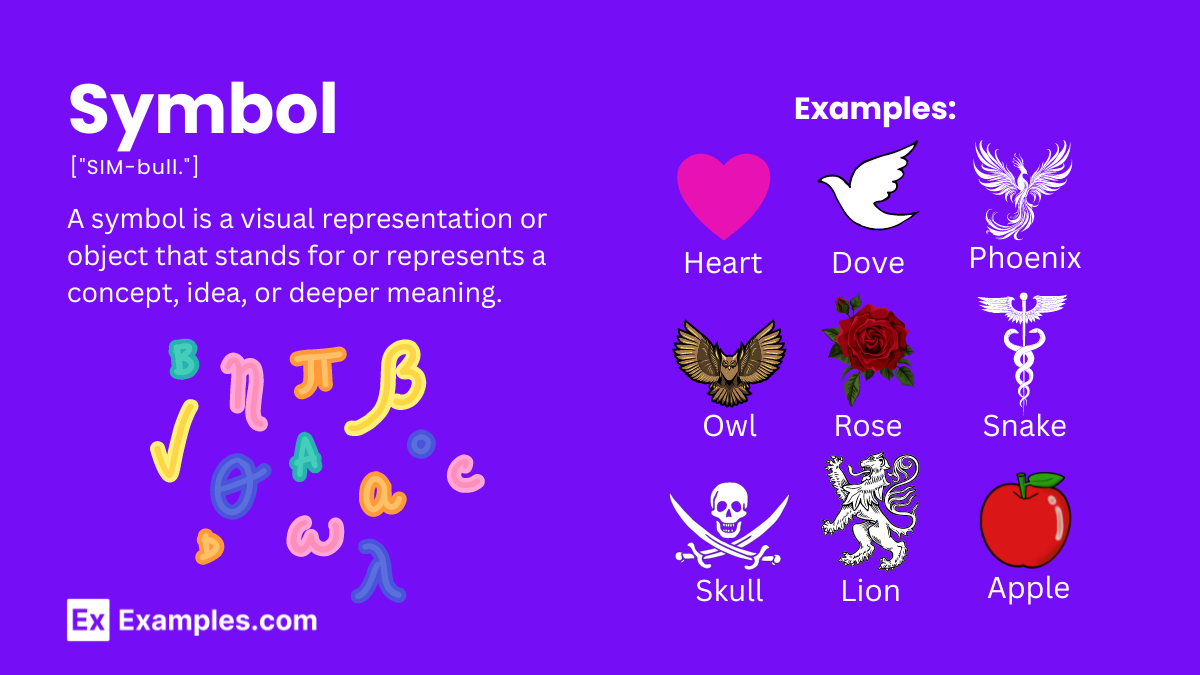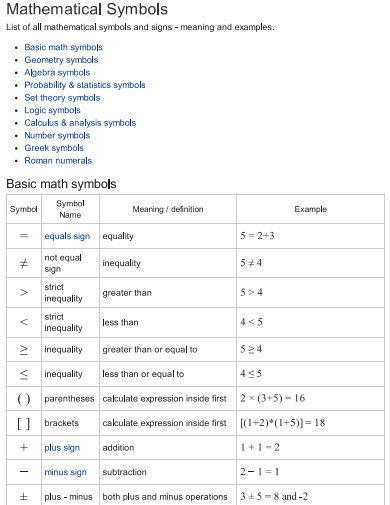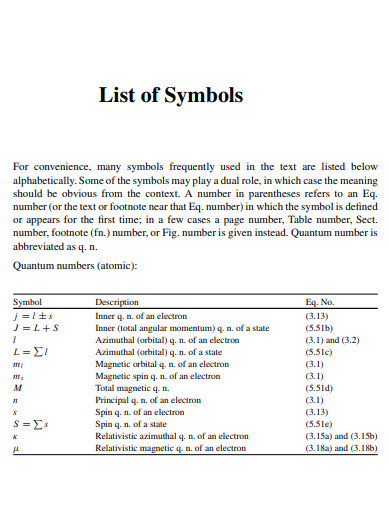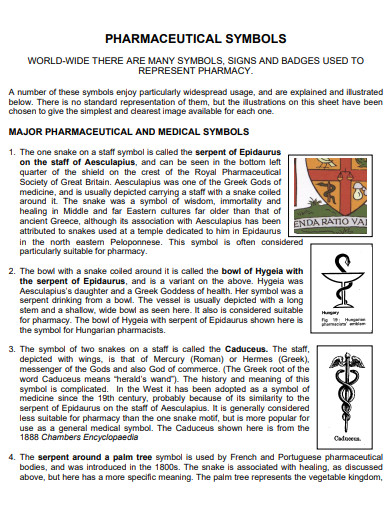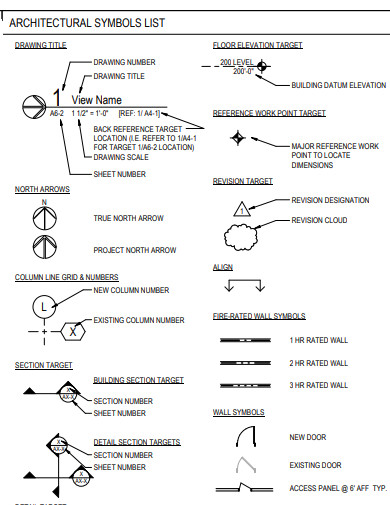100+ Symbol Examples
Humans can associate objects and images with various meanings that have different connotations. These meanings differ in context, theme, and tone, due to their subjective nature. Not only that, but different interpretations of a symbol will make space for biases and fallacies, which makes some symbols very subjective while others are very objective.
What Is a Symbol?
A symbol is an image that connotates or has a specific meaning when a person will observe or conduct an observation on the image. For example, the modern-day alphabet is characters that have specific vocal intonation attached to them, which makes the alphabet a symbol. More often than not, symbols have many uses and are often representative of a specific meaning that may be directly or indirectly connected with the image.
Types of Symbols
Literary Symbols
- Symbols used within literary works to represent abstract ideas or concepts.
- Examples:
- The green light in F. Scott Fitzgerald’s The Great Gatsby symbolizes Gatsby’s unattainable dreams.
- The conch shell in William Golding’s Lord of the Flies represents order and civilization.
Religious Symbols
- Symbols that hold specific meanings within religious contexts and traditions.
- Examples:
- The cross in Christianity symbolizes the sacrifice and resurrection of Jesus Christ.
- The lotus flower in Buddhism represents purity and enlightenment.
Cultural Symbols
- Symbols that convey meanings recognized by members of a particular culture.
- Examples:
- The bald eagle in the United States symbolizes freedom and strength.
- The yin-yang symbol in Chinese culture represents balance and harmony.
National Symbols
- Symbols that represent a country’s identity, values, or heritage.
- Examples:
- The Statue of Liberty in the United States symbolizes freedom and democracy.
- The maple leaf in Canada symbolizes the country’s natural beauty and cultural heritage.
Mathematical Symbols
- Symbols used to represent mathematical concepts, operations, and relationships.
- Examples:
- The plus sign (+) represents addition.
- The equals sign (=) denotes equality or equivalence.
Scientific Symbols
- Symbols used in scientific contexts to denote specific concepts, elements, or measurements.
- Examples:
- H2O represents water.
- The symbol Δ (delta) represents change or difference in science and mathematics.
Political Symbols
- Symbols associated with political movements, ideologies, or parties.
- Examples:
- The hammer and sickle represents communism.
- The elephant and donkey are symbols of the Republican and Democratic parties in the United States, respectively.
Universal Symbols
- Symbols that are widely recognized and understood across different cultures and societies.
- Examples:
- The heart symbol (♥) universally represents love and affection.
- The peace symbol (☮) is recognized globally as a symbol of peace and anti-war movements.
Corporate Symbols
- Logos and trademarks used by companies to represent their brand and identity.
- Examples:
- The swoosh logo represents Nike.
- The apple logo represents Apple Inc.
Psychological Symbols
- Symbols used in psychology to represent internal states, archetypes, or concepts.
- Examples:
- The shadow in Carl Jung’s theory represents the unconscious and repressed aspects of the personality.
- The labyrinth symbolizes a complex journey of self-discovery and personal growth.
Digital Symbols
- Symbols used in digital communication to convey emotions, actions, or information.
- Examples:
- Emojis, such as the smiley face (😊), represent various emotions.
- The @ symbol is used in email addresses and social media handles.
List of Symbols
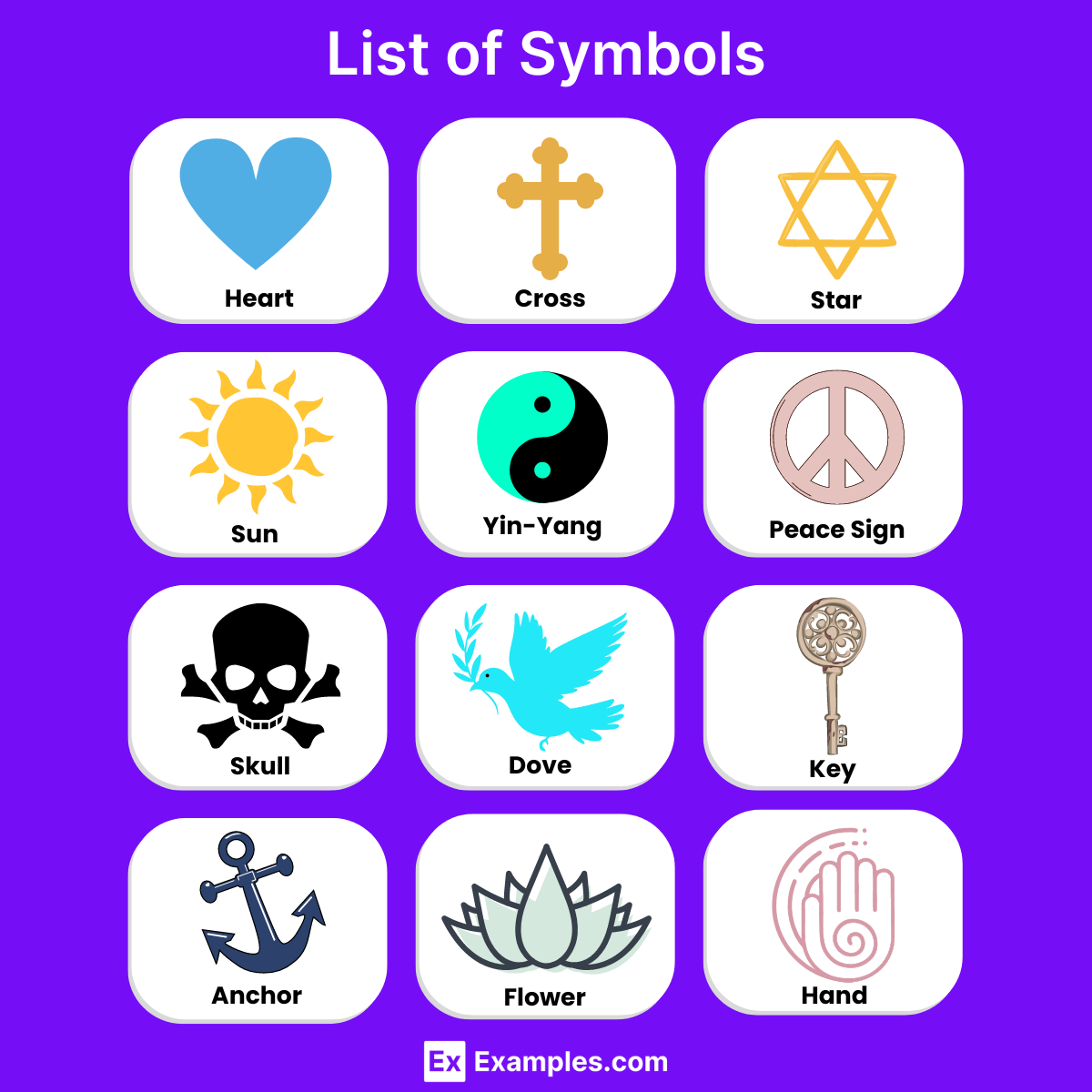
Literature and Culture
- Heart – Love, affection, and compassion.
- Dove – Peace, purity, and innocence.
- Owl – Wisdom and knowledge.
- Rose – Love and beauty.
- Skull – Death and mortality.
- Cross – Faith, Christianity, and sacrifice.
- Snake – Temptation, evil, and transformation.
- Lion – Courage, strength, and royalty.
- Phoenix – Rebirth, renewal, and immortality.
- Apple – Knowledge, temptation (as in the Biblical story of Adam and Eve).
Science and Mathematics
- π (Pi) – Ratio of a circle’s circumference to its diameter.
- ∞ (Infinity) – Concept of something without any limit.
- Δ (Delta) – Change or difference in mathematics and science.
- α (Alpha) – First or beginning, also used in finance to represent alpha coefficient.
- β (Beta) – Second, also used in statistics and finance (beta coefficient).
- Ω (Omega) – Ohm (unit of electrical resistance) and also symbolizes the end.
- μ (Mu) – Mean in statistics, also used to denote micro in measurements.
- ≠ (Not equal) – Inequality in mathematics.
- ≈ (Approximately equal) – Approximation in mathematics.
- ∑ (Sigma) – Summation of a set of values.
Religion and Spirituality
- Star of David – Judaism.
- Crescent Moon and Star – Islam.
- Lotus Flower – Purity and enlightenment in Buddhism.
- Ankh – Life in ancient Egyptian symbolism.
- Yin-Yang – Balance and duality in Taoism.
- Om (ॐ) – Sacred sound and spiritual icon in Hinduism.
- Cross – Christianity.
- Menorah – Judaism.
- Torii Gate – Transition from the mundane to the sacred in Shintoism.
- Eye of Horus – Protection and good health in ancient Egyptian symbolism.
Everyday Life and Miscellaneous
- Red Cross – Medical help and humanitarian aid.
- Heart – Love and health.
- Skull and Crossbones – Poison or danger.
- Peace Sign – Peace and anti-war movements.
- Smiley Face – Happiness and friendliness.
- Arrow – Direction or movement.
- Caduceus – Medicine and healthcare (though often confused with the Rod of Asclepius).
- Recycling Symbol – Environmentalism and recycling.
- Dollar Sign ($) – Money and finance.
- Lightning Bolt – Power and energy.
Examples of Symbol:
Symbol Examples in Literature
1: The Green Light in “The Great Gatsby” by F. Scott Fitzgerald
Symbolism: The green light at the end of Daisy’s dock symbolizes Gatsby’s hopes and dreams for the future, particularly his desire to reunite with Daisy. It also represents the larger theme of the American Dream and its elusive nature.
2: The Conch Shell in “Lord of the Flies” by William Golding
Symbolism: The conch shell symbolizes law, order, and civilization. When the boys use it to call meetings, it represents their initial attempts to establish a structured society on the island. As the story progresses and the conch loses its influence, it signifies the breakdown of social order.
3: The Mockingbird in “To Kill a Mockingbird” by Harper Lee
Symbolism: The mockingbird represents innocence and the idea that it is a sin to harm those who do not harm others. Characters like Tom Robinson and Boo Radley are symbolic mockingbirds, as they are innocent individuals who are unjustly persecuted.
4: The Raven in “The Raven” by Edgar Allan Poe
Symbolism: The raven symbolizes death and the narrator’s descent into madness. Its repeated utterance of “Nevermore” reinforces the themes of loss and hopelessness in the poem.
5: The Scarlet Letter in “The Scarlet Letter” by Nathaniel Hawthorne
Symbolism: The scarlet letter “A” that Hester Prynne is forced to wear symbolizes adultery, shame, and punishment. Over time, it also comes to represent Hester’s strength and resilience as she redefines its meaning through her actions.
6: The Whale in “Moby-Dick” by Herman Melville
Symbolism: The white whale, Moby Dick, symbolizes different things to different characters. For Captain Ahab, it represents an all-consuming obsession and the embodiment of evil. For others, it may symbolize the unknown, nature’s power, or fate.
7: The Yellow Wallpaper in “The Yellow Wallpaper” by Charlotte Perkins Gilman
Symbolism: The yellow wallpaper symbolizes the oppression of women and the protagonist’s mental illness. As she becomes more obsessed with the wallpaper, it reflects her growing desperation and loss of sanity.
8: The Fire in “Fahrenheit 451” by Ray Bradbury
Symbolism: Fire symbolizes destruction and censorship, as it is used to burn books and suppress knowledge. However, it also represents enlightenment and rebirth, particularly in the ending where fire is seen as a means of renewal and hope.
9: The Garden in “The Secret Garden” by Frances Hodgson Burnett
Symbolism: The secret garden symbolizes healing and rejuvenation. As Mary and Colin tend to the garden, it parallels their own emotional and physical growth, transforming from a neglected space into a place of beauty and vitality.
10: The Red Room in “Jane Eyre” by Charlotte Brontë
Symbolism: The red room symbolizes suffering and confinement. For Jane, it represents her childhood traumas and the harsh treatment she endures. The room’s oppressive atmosphere foreshadows the struggles she will face throughout her life.
Symbol Examples in Poetry
1: The Raven in “The Raven” by Edgar Allan Poe
Symbolism: The raven symbolizes death, darkness, and the narrator’s descent into madness. Its repeated utterance of “Nevermore” emphasizes the themes of loss and eternal despair.
2: The Road in “The Road Not Taken” by Robert Frost
Symbolism: The diverging roads symbolize life choices and the consequences of those choices. The poem reflects on the nature of decision-making and the impact of choosing one path over another.
3: The Albatross in “The Rime of the Ancient Mariner” by Samuel Taylor Coleridge
Symbolism: The albatross symbolizes nature and the burden of guilt. The mariner’s killing of the albatross brings a curse upon the ship, and the bird becomes a symbol of his sin and the resulting punishment.
4: The Rose in “A Red, Red Rose” by Robert Burns
Symbolism: The rose symbolizes deep and passionate love. The comparison of love to a red rose highlights its beauty, intensity, and enduring nature.
5: The Fly in “I Heard a Fly Buzz – When I Died” by Emily Dickinson
Symbolism: The fly symbolizes the mundane and inevitable intrusion of death. Its presence at the moment of death highlights the contrast between the expected solemnity of dying and the ordinary nature of the fly.
6: The Nightingale in “Ode to a Nightingale” by John Keats
Symbolism: The nightingale symbolizes immortality and the transcendent power of art. The bird’s song provides an escape from the pain and transience of human life, representing an eternal beauty.
7: The Tiger in “The Tyger” by William Blake
Symbolism: The tiger symbolizes both the beauty and ferocity of creation. Blake explores the duality of the tiger’s nature, questioning the intentions of its creator and the existence of good and evil.
8: The Lamb in “The Lamb” by William Blake
Symbolism: The lamb symbolizes innocence, purity, and the divine. In contrast to “The Tyger,” Blake uses the lamb to represent the gentle and benevolent aspects of creation.
9: The Sea in “Dover Beach” by Matthew Arnold
Symbolism: The sea symbolizes the eternal and ever-changing nature of life. It also reflects the poet’s sense of loss and the erosion of faith and certainty in the modern world.
10: The Sunflower in “Ah Sunflower” by William Blake
Symbolism: The sunflower symbolizes the human soul’s longing for eternal life and spiritual fulfillment. The flower’s yearning for the sun represents the desire for a higher existence beyond the earthly realm.
Symbol Examples Sentences
1: The Green Light in “The Great Gatsby” by F. Scott Fitzgerald
- The green light at the end of Daisy’s dock shimmered across the bay, symbolizing Gatsby’s unattainable dreams and the elusive nature of the American Dream.
2: The Conch Shell in “Lord of the Flies” by William Golding
- The conch shell lay shattered in the sand, a symbol of the boys’ lost innocence and the collapse of their fragile civilization.
3: The Mockingbird in “To Kill a Mockingbird” by Harper Lee
- The mockingbird sang sweetly in the trees, symbolizing the innocence destroyed by injustice and prejudice.
4: The Rosebush in “The Scarlet Letter” by Nathaniel Hawthorne
- The wild rosebush outside the prison door bloomed defiantly, symbolizing resilience and the possibility of redemption amid suffering.
5: The Mariner’s Albatross in “The Rime of the Ancient Mariner” by Samuel Taylor Coleridge
- The dead albatross hung heavily around the mariner’s neck, symbolizing his profound guilt and the burden of his transgression against nature.
6: The Burning Bush in “The Bible” (Exodus)
- The burning bush, aflame yet unconsumed, symbolized God’s divine presence and the miraculous nature of his message to Moses.
7: The Apple in “Snow White” by The Brothers Grimm
- The poison-laden apple, with its glossy, tempting exterior, symbolized the deceit and hidden dangers that lurk beneath a facade of beauty.
8: The Raven in “The Raven” by Edgar Allan Poe
- The raven perched ominously on the bust of Pallas, symbolizing unending sorrow and the inescapable grip of grief.
9: The Phoenix in Mythology
- The phoenix rose majestically from its ashes, symbolizing renewal, rebirth, and the eternal cycle of life and death.
10: The Garden of Eden in “Paradise Lost” by John Milton
- The lush, forbidden Garden of Eden, with its tree of knowledge, symbolized innocence and the catastrophic consequences of disobedience and the fall from grace.
Symbol Examples Figurative Language
1: The Pearl in “The Pearl” by John Steinbeck
Sentence: The pearl, like a beacon of hope and destruction, shimmered with the dreams and greed of those who beheld it.
2: The Red Wheelbarrow in “The Red Wheelbarrow” by William Carlos Williams
Sentence: So much depended upon the red wheelbarrow, glistening with rain, symbolizing the simplicity and essential nature of everyday objects.
3: The White Whale in “Moby-Dick” by Herman Melville
Sentence: The white whale, a leviathan of the deep, loomed as an omnipotent force, symbolizing the elusive and unconquerable nature of obsession.
4: The Sphinx in “Ozymandias” by Percy Bysshe Shelley
Sentence: The shattered visage of the Sphinx, half-buried in the desert sands, symbolized the inevitable decay of human pride and power.
5: The Black Cat in “The Black Cat” by Edgar Allan Poe
Sentence: The black cat, with its piercing eyes, crept through the shadows like a dark omen, symbolizing the narrator’s descent into madness and guilt.
6: The Green Knight in “Sir Gawain and the Green Knight”
Sentence: The Green Knight, towering and otherworldly, stood as a symbol of nature’s eternal cycle and the challenge of human virtue.
7: The Ring in “The Lord of the Rings” by J.R.R. Tolkien
Sentence: The One Ring, a small yet mighty artifact, gleamed with malevolent power, symbolizing the corrupting influence of absolute power.
8: The Yellow Wallpaper in “The Yellow Wallpaper” by Charlotte Perkins Gilman
Sentence: The yellow wallpaper, with its creeping, twisting patterns, mirrored the protagonist’s entrapment and descent into insanity.
9: The Cherry Orchard in “The Cherry Orchard” by Anton Chekhov
Sentence: The cherry orchard, blooming with the promise of the past, stood as a poignant symbol of the fading aristocracy and the inexorable march of time.
10: The Bridge in “An Occurrence at Owl Creek Bridge” by Ambrose Bierce
Sentence: The bridge, suspended over the abyss, symbolized the thin line between life and death, and the fleeting nature of human existence.
Symbol Examples in Sociology
In sociology, symbols are essential for understanding how individuals communicate, interpret, and interact within society. Symbols can be anything that carries a particular meaning recognized by people who share a culture. Here are some common examples of symbols in sociology:
1. Language
Language is the most significant symbol system. It allows individuals to communicate thoughts, ideas, and feelings. Different languages and dialects symbolize cultural identity and heritage.
2. Gestures
Gestures are movements of the body that communicate specific messages. For example:
- Waving: A common gesture for greeting or saying goodbye.
- Nodding: Indicates agreement or acknowledgment.
- Thumbs up: Signifies approval or success.
3. Religious Symbols
Religious symbols carry deep meaning and are often used in rituals and ceremonies. Examples include:
- Cross: Represents Christianity.
- Star of David: Symbolizes Judaism.
- Crescent Moon and Star: Associated with Islam.
4. Flags
Flags are powerful symbols of national identity and pride. They often evoke strong emotional responses and can represent ideals, history, and values of a country.
5. Icons and Logos
Icons and logos represent brands, organizations, or concepts. For example:
- Apple logo: Represents the Apple Inc. brand and its products.
- Nike Swoosh: Symbolizes the Nike brand and its association with sports and athleticism.
6. Cultural Artifacts
Cultural artifacts are physical objects that hold symbolic meaning within a culture. Examples include:
- Totem poles: Represent the heritage and stories of Indigenous peoples.
- Wedding rings: Symbolize marriage and commitment.
7. Colors
Colors can convey different meanings and emotions across cultures. For instance:
- Red: Often symbolizes love, passion, or danger.
- White: Can represent purity and innocence or mourning, depending on the culture.
- Black: Commonly associated with power, elegance, or death.
8. Music and Songs
Music and songs can be symbols of cultural identity and social movements. For example:
- National anthems: Represent national pride and unity.
- Protest songs: Symbolize resistance and social change.
9. Fashion and Clothing
Fashion and clothing styles can symbolize social status, group identity, or cultural norms. Examples include:
- Business suits: Represent professionalism and authority.
- Traditional attire: Reflect cultural heritage and customs.
10. Signs and Symbols in Everyday Life
- Traffic signs: Indicate rules and regulations on the road.
- Recycling symbol: Represents environmental awareness and sustainability.
- Heart emoji: Used in digital communication to express love and affection.
Symbol Examples in Movies
In movies, symbols are powerful tools that filmmakers use to convey deeper meanings, themes, and emotions. These symbols can take various forms, such as objects, colors, characters, or settings. Here are some notable examples of symbols in movies:
1. The Green Light in The Great Gatsby
The green light at the end of Daisy’s dock symbolizes Gatsby’s hopes and dreams for the future. It represents his longing for Daisy and the American Dream.
2. The Rose in Beauty and the Beast
The enchanted rose symbolizes the Beast’s curse and the time he has left to find true love. As the petals fall, the sense of urgency and impending doom increases.
3. The Mockingjay in The Hunger Games
The Mockingjay symbolizes rebellion and hope. It represents Katniss Everdeen’s role as the leader of the resistance against the oppressive regime of the Capitol.
4. The Spinning Top in Inception
The spinning top is used by the protagonist, Cobb, to distinguish between reality and dreams. Its continuous spin indicates a dream state, while it toppling over signifies reality.
5. The Feather in Forrest Gump
The feather symbolizes destiny and the idea that life is a series of random events. It reflects the film’s theme of unpredictability and the journey of life.
6. The Red Balloon in The Red Balloon
The red balloon represents innocence, freedom, and the joy of childhood. Its journey through the streets of Paris symbolizes the fleeting nature of these qualities.
7. The Ring in The Lord of the Rings
The One Ring symbolizes ultimate power and corruption. It represents the struggle between good and evil and the corrupting influence of power.
8. The Black Monolith in 2001: A Space Odyssey
The black monolith symbolizes human evolution and the unknown. It represents the influence of a higher intelligence guiding human development.
9. The Yellow Brick Road in The Wizard of Oz
The Yellow Brick Road symbolizes the journey to self-discovery and the pursuit of one’s dreams. It leads Dorothy and her friends to the Emerald City, representing their collective quest for fulfillment.
10. The Red Dress in The Matrix
The woman in the red dress symbolizes distraction and the seductive nature of the simulated reality within the Matrix. It is used to illustrate how easily people can be deceived.
Symbol Examples in Songs
Symbols in songs often convey deeper meanings, emotions, and themes that resonate with listeners. Here are ten examples of symbolic elements used in songs:
1. Stairway to Heaven by Led Zeppelin
Symbol: The Stairway
Meaning: The stairway symbolizes a spiritual journey or quest for enlightenment and fulfillment.
2. Blowin’ in the Wind by Bob Dylan
Symbol: The Wind
Meaning: The wind represents elusive answers to profound questions about peace, freedom, and justice.
3. Blackbird by The Beatles
Symbol: The Blackbird
Meaning: The blackbird symbolizes the struggle for civil rights and the empowerment of marginalized communities.
4. Candle in the Wind by Elton John
Symbol: The Candle
Meaning: The candle symbolizes the fragile and fleeting nature of life, especially of those who burn brightly but die young, like Marilyn Monroe.
5. Hotel California by Eagles
Symbol: Hotel California
Meaning: The hotel symbolizes entrapment and the seductive allure of materialism and excess.
6. Like a Rolling Stone by Bob Dylan
Symbol: Rolling Stone
Meaning: The rolling stone symbolizes a person who is rootless and lost, lacking direction and stability in life.
7. Firework by Katy Perry
Symbol: Firework
Meaning: The firework symbolizes individual brilliance and the potential for personal expression and empowerment.
8. Hallelujah by Leonard Cohen
Symbol: Hallelujah
Meaning: The word “Hallelujah” symbolizes both spiritual praise and the complex, often painful nature of love and human experience.
9. Bridge Over Troubled Water by Simon & Garfunkel
Symbol: Bridge
Meaning: The bridge symbolizes support and reassurance during difficult times, offering solace and help.
10. Chasing Cars by Snow Patrol
Symbol: Chasing Cars
Meaning: Chasing cars symbolizes the simplicity and purity of being in the moment with someone you love, free from complications and distractions.
Symbol Examples for Kids
Symbols are everywhere in our daily lives and can represent ideas, actions, or objects in a simple way that is easy to understand. Here are some examples of symbols that kids might encounter:
1. Heart
Meaning: Love and affection
Example: Drawing a heart on a card for a friend or family member shows that you care about them.
2. Smiley Face
Meaning: Happiness or friendliness
Example: Using a smiley face emoji in a message to show that you are happy or to make someone smile.
3. Red Cross
Meaning: Help or medical assistance
Example: Seeing a red cross on a building or a sign indicates that it is a place where you can get medical help, like a hospital or a clinic.
4. Peace Sign
Meaning: Peace and harmony
Example: Making a peace sign with your fingers to show that you want everyone to get along.
5. Stop Sign
Meaning: Stop and be cautious
Example: Seeing a stop sign while walking or riding a bike means you need to stop and look both ways before crossing the street.
6. Recycling Symbol
Meaning: Recycle and take care of the environment
Example: Putting items in a bin with the recycling symbol means they will be recycled and not thrown away.
7. Thumbs Up
Meaning: Approval or a good job
Example: Giving a thumbs up to a friend when they do something well or to show that you agree.
8. Owl
Meaning: Wisdom and knowledge
Example: Seeing an owl on a book cover or school emblem can symbolize learning and wisdom.
9. Star
Meaning: Excellence or success
Example: Getting a star sticker on your homework means you did a great job.
10. Rainbow
Meaning: Happiness and hope
Example: Seeing a rainbow in the sky can make you feel happy and hopeful, often after a rainstorm.
More Examples of Symbol:
1. Letter Symbol
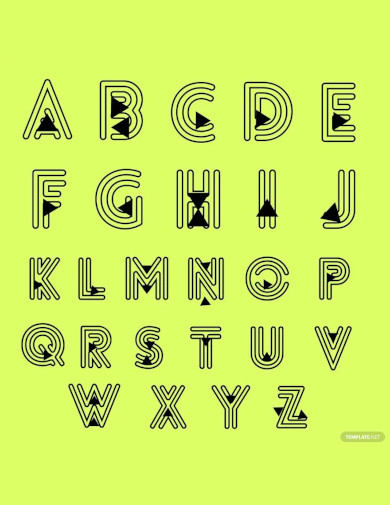
2. Nature Symbol
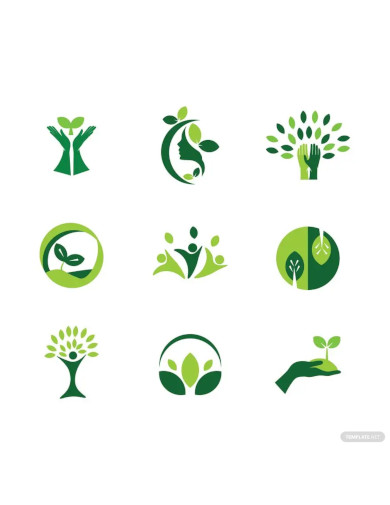
3. Mathematical Symbol
4. List of Symbol
5. Pneumatic Symbols
6. Pharmaceutical Symbols
7. Architectural Symbols
8. English Phonetic Symbols
Importance of Symbol
Communication
- Efficiency: Symbols convey complex ideas quickly and efficiently. For example, mathematical symbols like “+” and “=” communicate operations and relationships concisely.
- Universal Understanding: Many symbols are universally recognized, transcending language barriers. For instance, the heart symbol (♥) is globally understood to represent love.
Cultural Identity
- Heritage and Traditions: Symbols reflect and preserve cultural heritage and traditions. The Dreamcatcher in Native American culture represents protection and is a significant cultural artifact.
- National Identity: Symbols like national flags and emblems foster a sense of belonging and pride among citizens. The bald eagle in the United States symbolizes freedom and strength.
Emotional Expression
- Conveying Emotions: Symbols are powerful tools for expressing emotions. Emojis in digital communication, like the smiley face (😊), effectively convey feelings and moods.
- Artistic Expression: In literature and art, symbols enhance emotional depth and meaning. The green light in The Great Gatsby symbolizes Gatsby’s hopes and dreams.
Religious Significance
- Faith and Belief: Religious symbols, such as the cross in Christianity or the crescent moon and star in Islam, embody the core beliefs and values of faith communities.
- Rituals and Practices: These symbols play a crucial role in religious rituals and practices, providing a tangible connection to spiritual beliefs.
Guidance and Navigation
- Directional Symbols: Symbols like arrows guide people in navigation and wayfinding, essential in maps, road signs, and interfaces.
- Safety and Warnings: Symbols such as the skull and crossbones indicate danger and help ensure safety by providing clear warnings.
Concept Representation
- Abstract Ideas: Symbols represent abstract concepts that might be difficult to explain otherwise. The infinity symbol (∞) represents the concept of eternity and limitless possibilities.
- Scientific Notation: In science and mathematics, symbols denote specific elements, units, and operations, facilitating precise communication of complex information.
Branding and Identity
- Corporate Branding: Logos and trademarks, like the Apple logo or Nike swoosh, create strong brand identities and recognition.
- Product Identification: Symbols help consumers identify and choose products quickly, enhancing the effectiveness of marketing strategies.
Historical Significance
- Historical Context: Symbols provide insights into historical events and eras. For instance, the hammer and sickle symbolize the history of communism.
- Cultural Evolution: They reflect the evolution of cultures and societies over time, preserving historical narratives and changes.
Psychological Impact
- Subconscious Influence: Symbols can influence thoughts and behaviors on a subconscious level. Jungian psychology uses symbols like the shadow to explore the unconscious mind.
- Therapeutic Use: In therapy, symbols such as mandalas are used to promote healing and personal growth.
Educational Tools
- Learning and Memory: Symbols aid in learning and memory retention by simplifying complex concepts. Educational charts and diagrams often use symbols for this purpose.
- Engagement and Interest: Using symbols in education makes content more engaging and interesting for students, enhancing the learning experience.
Ways to control Symbol
Standardization
- Consistent Use: Ensure symbols are used consistently across different contexts to maintain their meaning and effectiveness. For example, using the same icon for “save” across all software applications.
- Guidelines and Manuals: Develop and follow guidelines or style manuals that specify how symbols should be used. This helps maintain uniformity and clarity.
Contextual Clarity
- Clear Definitions: Provide clear definitions and explanations of symbols, especially in educational and technical materials, to avoid confusion.
- Appropriate Context: Use symbols in appropriate contexts to ensure they convey the intended message. For example, using a heart symbol (♥) in contexts related to love and affection.
Cultural Sensitivity
- Cultural Awareness: Be aware of cultural differences in symbol interpretation. Ensure that symbols are culturally appropriate and do not offend or mislead different audiences.
- Localization: Adapt symbols to fit the cultural context of the target audience. This may involve changing colors, shapes, or designs to align with cultural norms.
Simplification
- Simplicity: Design symbols to be simple and easily recognizable. Avoid overly complex or detailed designs that may be difficult to interpret quickly.
- Minimalism: Use minimal elements to convey the intended message effectively. Simple symbols are more likely to be understood universally.
Accessibility
- Universal Design: Ensure that symbols are accessible to people with disabilities. This includes considering color contrast, size, and alternative text descriptions for visually impaired users.
- Testing: Test symbols with diverse user groups to ensure they are easily understood by all, including those with cognitive impairments.
Education and Training
- Instruction: Provide education and training on the meaning and use of symbols. This is particularly important in workplaces, schools, and other settings where symbols are crucial for safety and communication.
- Documentation: Include explanations and examples in manuals, guides, and online resources to help users understand symbols correctly.
Regulation and Standards
- Industry Standards: Adhere to industry standards and regulations for symbol use. For example, ISO standards for safety symbols ensure consistency and understanding across different regions.
- Compliance: Ensure compliance with legal requirements and guidelines for symbol use, especially in areas like traffic signs, product labeling, and hazard communication.
Feedback and Improvement
- User Feedback: Collect feedback from users about the effectiveness and clarity of symbols. Use this feedback to make necessary improvements.
- Continuous Review: Regularly review and update symbols to keep them relevant and effective. This may involve redesigning outdated symbols or introducing new ones.
Technological Integration
- Digital Platforms: Leverage digital platforms to provide interactive and dynamic explanations of symbols. For example, using tooltips or pop-up descriptions in software applications.
- Smart Technologies: Integrate symbols into smart technologies like augmented reality (AR) to provide real-time explanations and enhance understanding.
Visual Consistency
- Design Consistency: Maintain visual consistency in symbol design, including color schemes, line thickness, and style. This helps users quickly recognize and understand symbols.
- Brand Alignment: Ensure that symbols align with the overall visual identity and branding of an organization or product.
How to Use a Symbol
Some symbols are subject to the person’s culture, ethnicity, experience, or ethnic group, while other symbols have an objective meaning that transcends various limitations and boundaries. Proper usage of symbols can not only elevate one’s book, poem, speech, or article but also make the output memorable.
Step 1: Choose a Context or Theme
Begin by selecting a context or theme you are planning to use the symbol in or at. It is also important to know the background of that symbol and the various ethical, cultural, and historical significance that people have associated with the symbol.
Step 2: Obtain a List of Symbols that Match the Context or Theme
After you have chosen the specific context or theme, you must now search for a general list of symbols that have meanings and descriptions similar to the chosen context or theme. This list of symbols will act as one’s main reference point.
Step 3: Choose or Select Potential Symbols You Can Use
You must choose or select potential symbols you can integrate or use in your work. Just note that the use of symbols or symbolism in one’s work should not be too much as it can reduce the quality of your output.
Step 4: Insert or Use the Chosen Symbols
You must now strategically insert or use the chosen symbols in the list. Note that the symbol must match the theme, context, and tone of the text or situation you will use the symbol in. This is because some people can misinterpret the symbols people use in a specific context or situation.
Why are symbols important?
Symbols convey complex ideas quickly and efficiently, enabling communication across different languages and cultures.
What is an example of a common symbol?
A heart is a common symbol representing love and affection.
How are symbols used in literature?
Authors use symbols to add deeper meaning to their stories, helping readers to understand themes and emotions.
Can symbols have different meanings?
Yes, symbols can have different meanings depending on the context and culture in which they are used.
What is a cultural symbol?
A cultural symbol is an object or sign that holds significance within a specific culture, like the American flag.
How do symbols function in religion?
Symbols in religion represent beliefs, values, and traditions, such as the cross in Christianity or the crescent moon in Islam.
What role do symbols play in communication?
Symbols simplify communication by representing complex ideas and emotions with a single image or sign.
Are symbols universal?
Some symbols are universally recognized, like the smiley face for happiness, while others may be specific to certain cultures.
How can symbols be learned?
Symbols are learned through exposure and context, often taught in education, literature, media, and everyday interactions.



